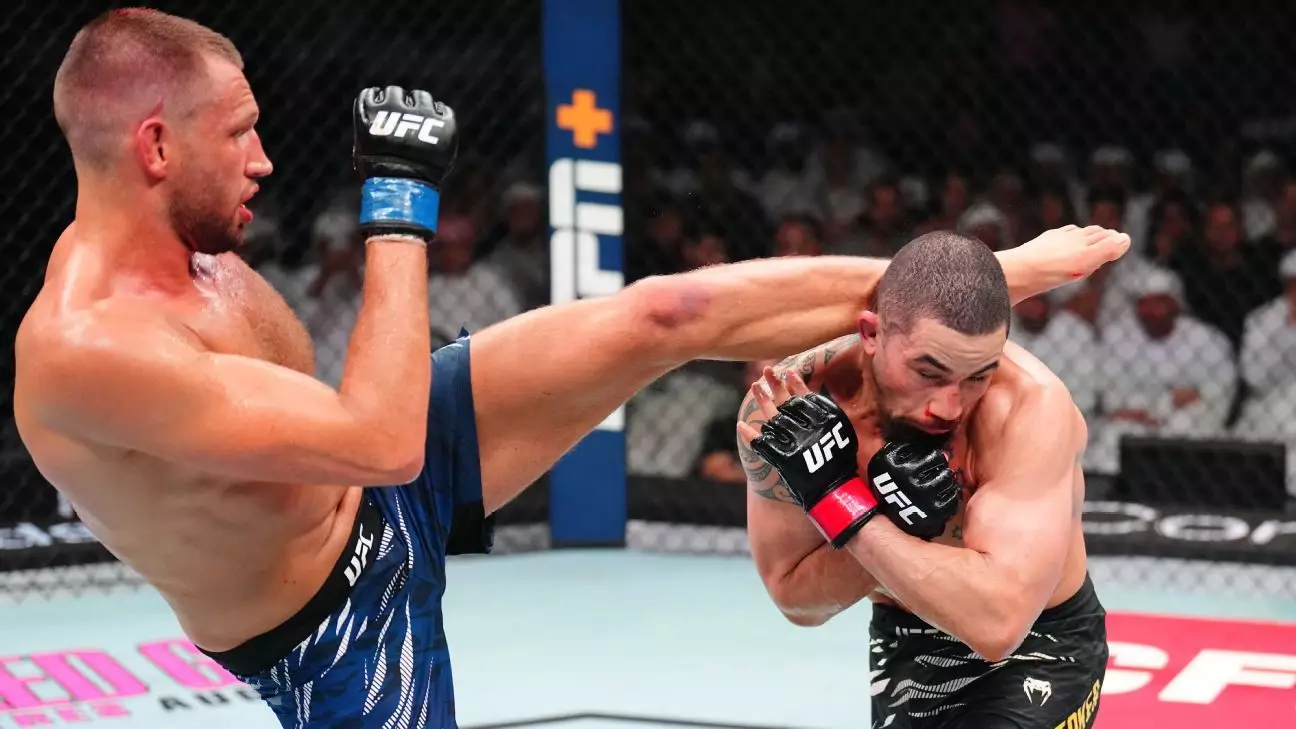In a night that showcased resilience, technical prowess, and strategic aggression, Reinier de Ridder announced himself as a serious contender in the UFC middleweight division. His victory over Robert Whittaker, a seasoned veteran and fan favorite, is more than just a win—it’s a statement that the Dutch fighter has arrived on the big stage with undeniable force. The bout’s outcome challenges traditional notions of heavyweight credentials based solely on striking power and emphasizes the importance of volume, pressure, and unyielding stamina in modern MMA.
De Ridder’s dominant statistical performance, despite a narrow split decision, underlines a significant shift in scoring priorities. Outlanding Whittaker by a wide margin, controlling the cage, and inflicting visible damage were clear indicators of his intent. However, what made this victory stand out was not merely the numbers but the relentless pressure the 34-year-old applied, never allowing Whittaker space to breathe. Such an approach must be recognized as a strategic masterstroke—an assertion that a fighter’s volume and control can trump traditional knockout power in the eyes of contemporary judges.
Redefining Ground and Pound: A Match of Grit and Graft
De Ridder’s background as a grappler clearly influences his fighting style, but his recent performances reveal an evolution beyond submission specialist. His commitment to takedown attempts, complemented by the ability to stay aggressive on the ground, demonstrated that he is willing and able to adapt as an all-around fighter. Despite Whittaker’s impressive takedown defense — thwarting 13 of 15 attempts — De Ridder’s ability to maintain pressure and land damaging knees and strikes exemplified his strategic versatility.
This fight also dispelled the misconception that submission and grappling alone can dominate MMA’s middleweight division. De Ridder’s volume striking, complemented by controlled ground work, showcased a comprehensive MMA toolkit. It’s a reminder that being effective in multiple disciplines often trumps single-strategy fighters who rely solely on striking or grappling. Winning this contest highlighted that an integrated approach, especially when combined with relentless pressure, can carve a pathway to victory even against top-tier opponents like Whittaker.
Implications for the Middleweight Hierarchy and Future Matchups
The victory elevates De Ridder’s standing within the division, setting him up as a formidable challenge for the sport’s elite. His call for a title shot against the winner of Chimaev vs. Du Plessis at UFC 289 makes strategic sense—he’s climbing rapidly and has shown he can handle high-pressure situations. In a division crowded with dangerous strikers and grapplers, De Ridder’s all-encompassing fighting style distinguishes him as a uniquely dangerous threat.
Conversely, this loss exposes vulnerabilities in Whittaker’s game, particularly in defending pressure fighters who can dictate the pace. For a seasoned competitor like him, consecutive defeats highlight the necessity for strategic adjustments—perhaps refining his takedown defense further or diversifying his offensive arsenal to avoid becoming predictable. Moreover, his current ranking at No. 5 might need reevaluation, considering the transformative nature of de Ridder’s performance.
The bout’s outcome also sparks an ongoing debate about how fights are judged—should the focus shift more towards volume and damage rather than just striking accuracy or knockdowns? De Ridder’s performance suggests that modern MMA tends to favor fighters who impose their will consistently over the course of a fight, valuing sustained effort and positional control just as highly as highlight-reel moments.
Challenging Preconceived Notions of Power and Technique
De Ridder’s approach challenges the age-old perception that knockout power alone determines a fighter’s supremacy. His victory illustrates that in the UFC’s current landscape, fighters who embrace a multifaceted, relentless style—combining grappling, striking volume, and strategic cage control—can outlast and outfight fighters with raw power. This insight is especially relevant considering his recent wins against top prospects and established fighters.
His willingness to engage with heavy-hitter Whittaker on equal footing, even when the odds suggested a grappling-based approach, demonstrates profound confidence and adaptability. It’s a signal that fighters capable of blending disciplines and maintaining sustained pressure can forge their own path to success, possibly even more effectively than relying solely on one-strike knockout opportunities.
Reinier de Ridder’s ascent is a testament to the evolution of MMA, emphasizing that true greatness resides in the ability to adapt, persist, and control a fight’s tempo. His forthcoming matches will be pivotal, not only to establish his position in the title conversation but also to challenge and redefine what it means to be a champion in the division.


Leave a Reply